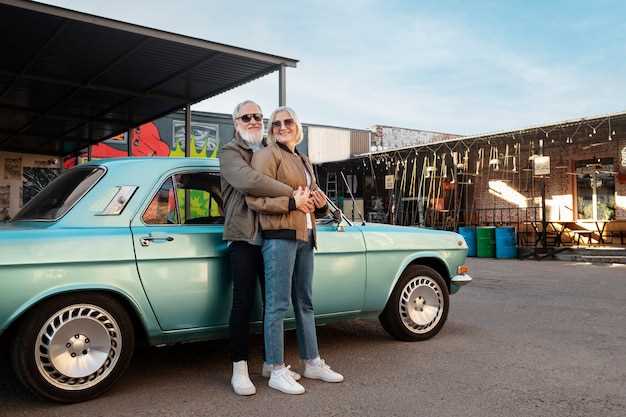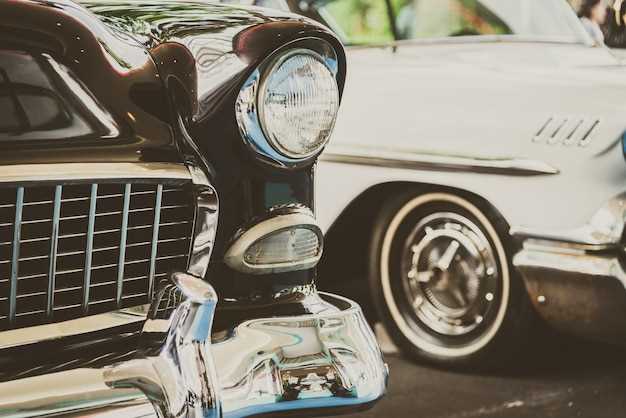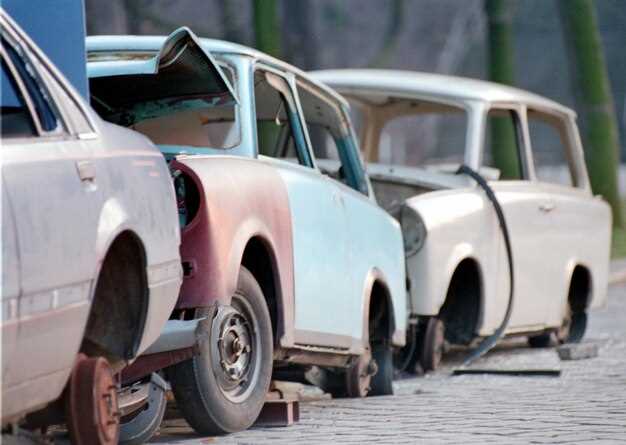
Collecting vintage cars can be a rewarding hobby, but it also has the potential to be a lucrative investment. With the right knowledge, dedication, and passion, any collector can turn their collection into a valuable asset. Understanding the nuances of the vintage car market is essential for making informed decisions that can maximize both enjoyment and profit.
In this article, we will provide essential tips for building a profitable vintage car collection. From selecting the right models to understanding market trends, these insights will help you navigate the complex world of classic automobiles. Whether you are a seasoned enthusiast or a newcomer to collecting, our guide aims to enhance your experience and financial success in the vintage car market.
With the right approach, your vintage car collection can not only bring joy and nostalgia but also serve as a smart investment strategy. Prepare to embark on a journey that combines passion with profit, as we explore the art of curating a collection that stands the test of time.
Identifying High-Potential Vintage Cars for Investment

Investing in vintage cars can be a lucrative venture if approached with careful consideration and insight. Here are essential tips for identifying vintage cars that hold high investment potential.
First, focus on rarity. Cars that were produced in limited quantities or are associated with unique historical events tend to appreciate over time. Research models that have a strong collector following. Popular brands like Ferrari, Porsche, and Aston Martin often come with a higher demand, driving up their value.
Next, assess the condition of the vehicle. Cars in original, well-maintained states usually command higher prices. Take into account the car’s history, including prior ownership and service records. Documentation can enhance the car’s value significantly, making it a vital factor in your collection.
Consider the market trends. Monitoring auction results and sales of comparable models can provide valuable insights into valuation. Certain models may experience fluctuating demand, influenced by factors like media exposure or a resurgence in interest for specific styles.
Additionally, aesthetic appeal cannot be overlooked. Classic cars with iconic designs or color schemes attract more collectors. Models that evoke nostalgia often draw attention and can lead to excellent appreciation over time.
Lastly, network with other collectors and enthusiasts. Engaging with the vintage car community can reveal insights on upcoming trends and desirable models. Their experiences and recommendations could guide you in building a successful and profitable collection.
Strategies for Sourcing and Purchasing Vintage Cars
Building a profitable vintage car collection requires strategic planning and execution in sourcing and purchasing vehicles. First and foremost, it is essential to identify the specific types of cars that align with your investment goals. Focusing on particular brands, models, or eras can enhance both passion and profitability in your collection.
Networking within the vintage car community is crucial. Attend car shows, auctions, and enthusiast meetups to connect with collectors, restorers, and dealers. These events often provide opportunities to discover cars before they hit the wider market. Building relationships can lead to access to exclusive sales or even private collections that are not publicly advertised.
Utilize online platforms dedicated to classic automobiles. Websites such as Hemmings, Bring a Trailer, and classic car forums allow you to browse listings and connect with sellers nationwide. Set alerts for specific models or features to ensure you don’t miss potential investment opportunities.
Consider engaging with reputable vintage car dealers who have a proven track record. Experienced dealers can offer insights into the market trends, helping you make informed purchasing decisions. They often have connections to rare models that can complete your collection or provide advantageous investment opportunities.
When evaluating potential purchases, conduct thorough research on the car’s history, condition, and market value. Utilize vehicle history reports and obtain a pre-purchase inspection from a qualified mechanic. This ensures you understand any potential restoration costs and can accurately assess the car’s worth as an investment.
Finally, be patient and flexible. The vintage car market can be unpredictable, and attractive deals may take time to surface. Always be prepared to walk away if a car does not meet your criteria or if the price does not reflect its true value. A disciplined approach will help ensure your collection remains focused and profitable over time.
Maintaining and Valuing Your Vintage Car Collection

Maintaining a vintage car collection is crucial for preserving the value of each vehicle and ensuring that your investment continues to appreciate over time. Regular maintenance goes beyond simple repairs; it encompasses routine check-ups, ensuring that fluids are changed, and protecting the bodywork from rust and deterioration. A properly cared-for car not only performs better but can also fetch a significantly higher resale price.
Investing time and resources into proper storage is also essential. Vintage cars should be kept in a climate-controlled environment to prevent damage from extreme temperatures or humidity. Utilizing car covers, maintaining battery health, and ensuring tires are properly inflated can all contribute to the longevity of your collection.
Valuing a vintage car collection requires continuous market research. Trends in the vintage car market fluctuate, impacting the value of your cars. Factors such as rarity, condition, and market demand play critical roles. Engaging with appraisal experts can provide insights into your collection’s worth, especially if you’re considering selling or insuring your vehicles. Regular assessments will help you understand how your investment is performing over time.
Documentation of each car’s history, including maintenance records, restorations, and any modifications, enhances value and becomes crucial during valuation. Preserving original parts and maintaining provenance can further establish authenticity and desirability among collectors.
Ultimately, the right combination of meticulous maintenance and informed valuation strategies will ensure that your vintage car collection serves as both a passion project and a sound investment for the future.

